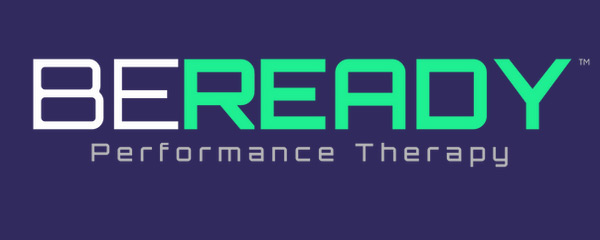You feel pain in the back of your lower leg while running, or it possibly only takes walking to elicit pain. It’s keeping you from training and living your life. What do you do?
We see this quite a bit at Be Ready PT.
The first thing to remember is that it’s going to be okay. Yes, it may interrupt your training in the short-term but most people tend to recover very well from low to moderate-severity calf strains and Achilles tendon injuries.
But before we get into how to get better, let’s figure out what’s going on.
Which is it? Calf Strain or Achilles Tendon Injury?
- Calf Strain: Typically felt in the meatier part of your calf muscle on the back of your leg. It may have a knot or painful area tender to a pressuring touch. Some people may feel a thin line of pain that extends vertically a few inches up and down the muscle.
- Achilles Tendon Injury: Felt primarily in the dense tendinous area just above the back of your heel, and may extend down into the top of your heel or bottom of your foot. Sometimes this area will look red and inflamed, and at other times not. Often these injuries will be achy at the start of a workout, feel a bit better as you warm up, and feel worse again when you cool down.
What do you do about it?
- Calf Strain
Once the initial few days of pain and injury have passed, consider the following, with the goal being to gradually reintroduce movement and light activity.
Once pain has subsided, begin gentle stretching of the calf muscle. Start with very light stretches and hold each stretch for 15-20 seconds, repeating 2-3 times.
- Calf Stretch (Gastrocnemius)**: Stand facing a wall, place one foot behind you, and keep the back leg straight. Gently lean forward to feel a stretch in the back leg’s calf.
- Calf Stretch (Soleus)**: Same as above, but bend the back knee slightly to target the deeper soleus muscle.
- Perform gentle ankle circles and flexion/extension movements (pointing and flexing the foot) to maintain range of motion in the ankle joint.
- Gradually begin to introduce non-weight-bearing or low-impact activities like swimming or cycling, if pain allows.
- As you feel confident, start introducing resisted exercises like calf raises, and proprioceptive exercises like single-leg balance.
- Many people feel unsure about progressive exercise to get back to things like running and jumping. In this case, we recommend you see a sports physical therapist for guidance.
- Achilles Tendon Injury (Achilles Tendonitis or Achilles Tendinosis or Insertional Achilles Tendonitis)
There’s a good rule for tendon injuries: “Tendons love load.” The questions become “what type of load, how much, and when?”
- We recommend starting with isometric (or non-moving muscle contractions) early on, like isometric calf raises or ankle inversions. You may choose to do isometric holds of these movements for an amount of time that allows you to feel no more than a 2/10 on the pain scale.
- Then, try some eccentric exercises, like a deficit calf raise negative with a slow lowering of the heel and assistance raising it back up. If you have pain very near the junction of where the Achilles tendon ends and the heel begins, We recommend holding off on the “deficit” portion of the calf raise negative, and to start on level ground.
- Gradually include other movements like tall-to-short landing, low pogo hops, and short duration jogging once you can do isometric and eccentric calf raises confidently for a higher number of reps and time.
Other diagnoses to consider:
Calf strains and Achilles tendon injuries are not the only things that might be happening at your lower leg. Other injuries may include:
1. Calf Contusion (Bruise)
2. Deep Vein Thrombosis (DVT)
3. Compartment Syndrome
4. Muscle Cramp (Charley Horse)
5. Nerve Impingement or Radiculopathy
If you have any questions, please feel free to contact us by email. If you are in Nashville and would like to schedule a consult, please go to our menu or homepage to schedule a call.
Happy training,
Dr. Ross Gentry


